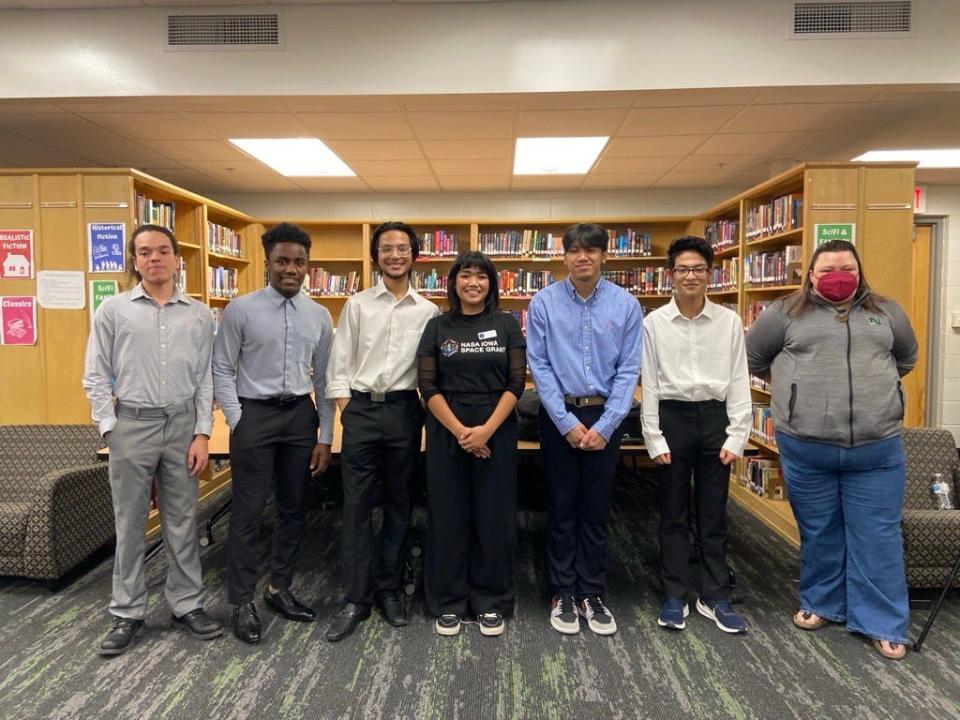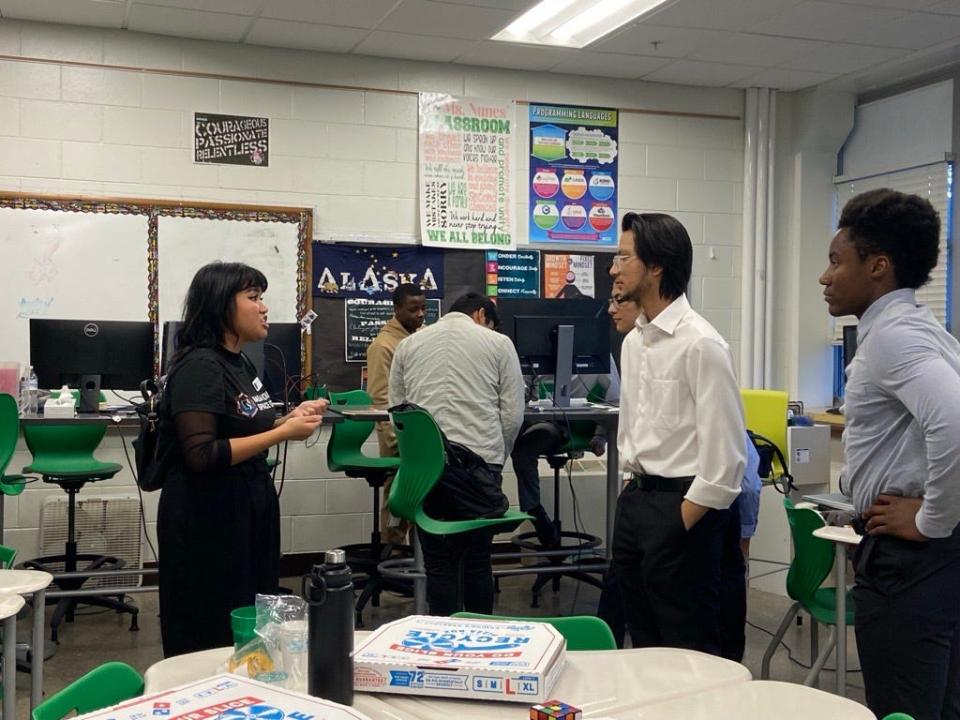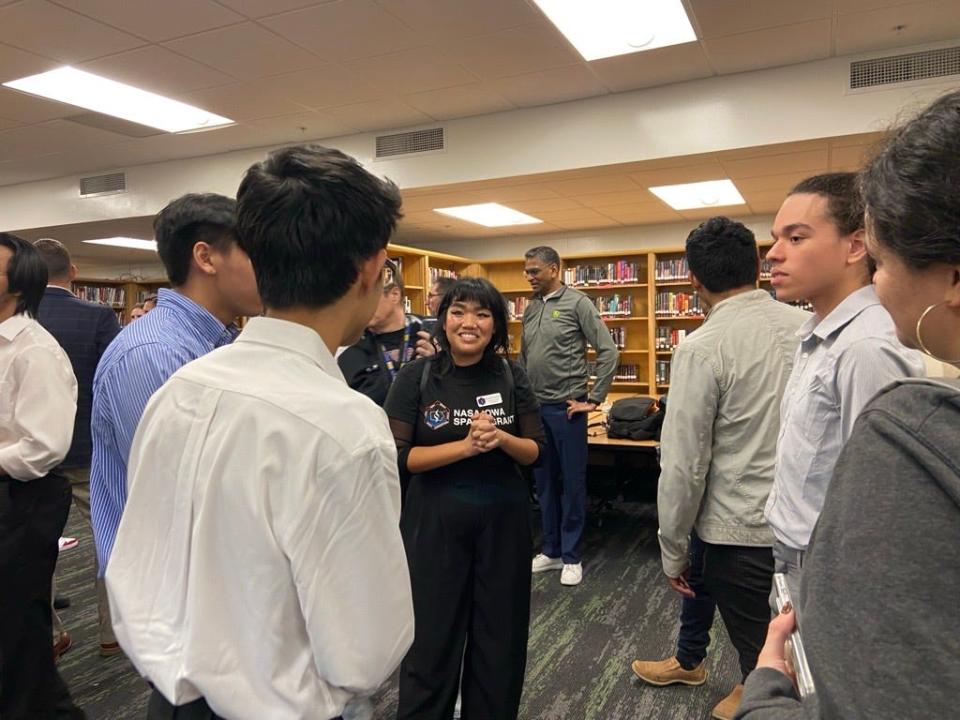North High School students shoot for the moon in NASA's App Development Challenge
Five students from North High School showcased their project as part of a national competition held by NASA on Friday, Dec. 8.
"Given the data from NASA, we collaborate, problem-solve, and create, putting our love of technology, science, and math together," said student leader junior Sujal Pokhrel in an email to the Register.
The NASA App Development Challenge (ADC) is an annual coding competition for middle and high school students across the country, requiring the creation of a moon region visualization for mission planning.
According to NASA's website, this year "teams of middle school or high school teams have 10 weeks to submit a video showcasing their app to visualize the South Pole region of the Moon utilizing lunar terrain data and display essential information for navigation and communication."
This app is specially geared towards the landing of Artemis, which will be the hub of the next moon landing.
There are more than 100 teams entered in the competition, and North High School is home to the only team from Iowa: Frostbyte.
Alongside Pokhrel, the team is made up of junior Champ-Pacifique Mukiza, junior Jefrey Alen, virtual campus junior Moss Louvan and sophomore Romas Pokhrel.
"Our process through this project was certainly not a smooth and easy road," Mukiza said. " … initially, we began this project by understanding what roles we each would have."
And, from there, Frostbyte was born.
What does Frostbyte's app do?
While the project Frostbyte completed isn't like the apps you download on your phone, the group made a project that shows what a landing on the moon may look like based upon the data NASA had given them.
The data included images of Artemis locations, research regarding the moon's terrain, visibility and slope.
With this information, Frostbyte used software such as Python, along with the help of their club advisor Jessi Nunes, an educator at North High School. The software allowed them to create 3D visualizations of the moon's surface and used that to decipher where and how landing might work in the most favorable manner.
The team jumped through hurdles like the foreignness of visualizing data on a plane they had never worked on before and had to figure out how to use their resources to translate it into something that they did know how to work with: Cartesian coordinates.

Rachel Shannon, assistant director for Education and Outreach at NASA Iowa Space Grant Consortium and assistant teaching professor with the electrical and computer engineering department at Iowa State University said Frostbyte's project rivals what she sees her students do.
"Oftentimes, one of the hardest things in science as an engineer, a scientist, is communicating," Shannon said. "We're so technical, but the fact that they can just speak about all the technical things that they learned is such an easy way to understand, that is a hard skill."
Why is this NASA challenge so important?
It's more than just winning a competition to Frostbyte, it's about fostering STEM education and introducing it to young students.
"Their (STEM and NASA's) development affects all of humanity, being engrained and normalized in society, helping everyone with their daily lives," Louvan said. "We want to be a part of that change."

Des Moines Public Schools Superintendent Ian Roberts attended Frostbyte's presentation, making a promise to fulfill what they need to be successful and what others need to get involved.
"Science, technology, engineering and math is here to stay," Roberts said. "We know that when students are exposed to classes that are connected to those, it increases critical thinking skills and teamwork … I want to make sure that we're investing and allocating resources to STEM projects."
About the NASA App Development Challenge
According to the ADC, the challenge started at the beginning of October, and teams have until Dec. 13 to conclude their submission with a video submission.
Once certain submissions move forward in the competition, teams will present their app in an interview with NASA subject matter experts from NASA's Space Communication and Navigation program.
Once interviews are completed, several teams will rise to the top and have the chance to visit the Johnson Space Center in Houston, Texas in April 2024.
It's not just about winning, it's about the journey
"I can tell you that the commitment I have seen has been the very definition of polar bear pride," Nunes said. "… I could not be more proud of these young scholars."

While their journey is soon coming to an end with the last deadline of Dec. 13 coming up, Frostbyte is already working on their plans for next year, including an app, wider outreach, a bigger team and more diversity.
"We definitely want to do this again next year," Muzika said. "We want to include more students, we want to include more from across DMPS."
As for their future plans, they're ready to be taken anywhere. After all, they're bright young scholars ready to take on the world and the stars.
"As you can tell, we're nerds," Sujal said.
Kyle Werner is a reporter for the Register. Reach him at kwerner@dmreg.com.
This article originally appeared on Des Moines Register: North High students compete in NASA's App Development Challenge

